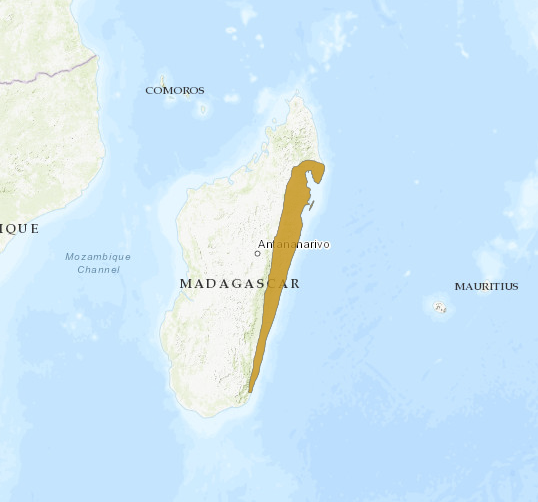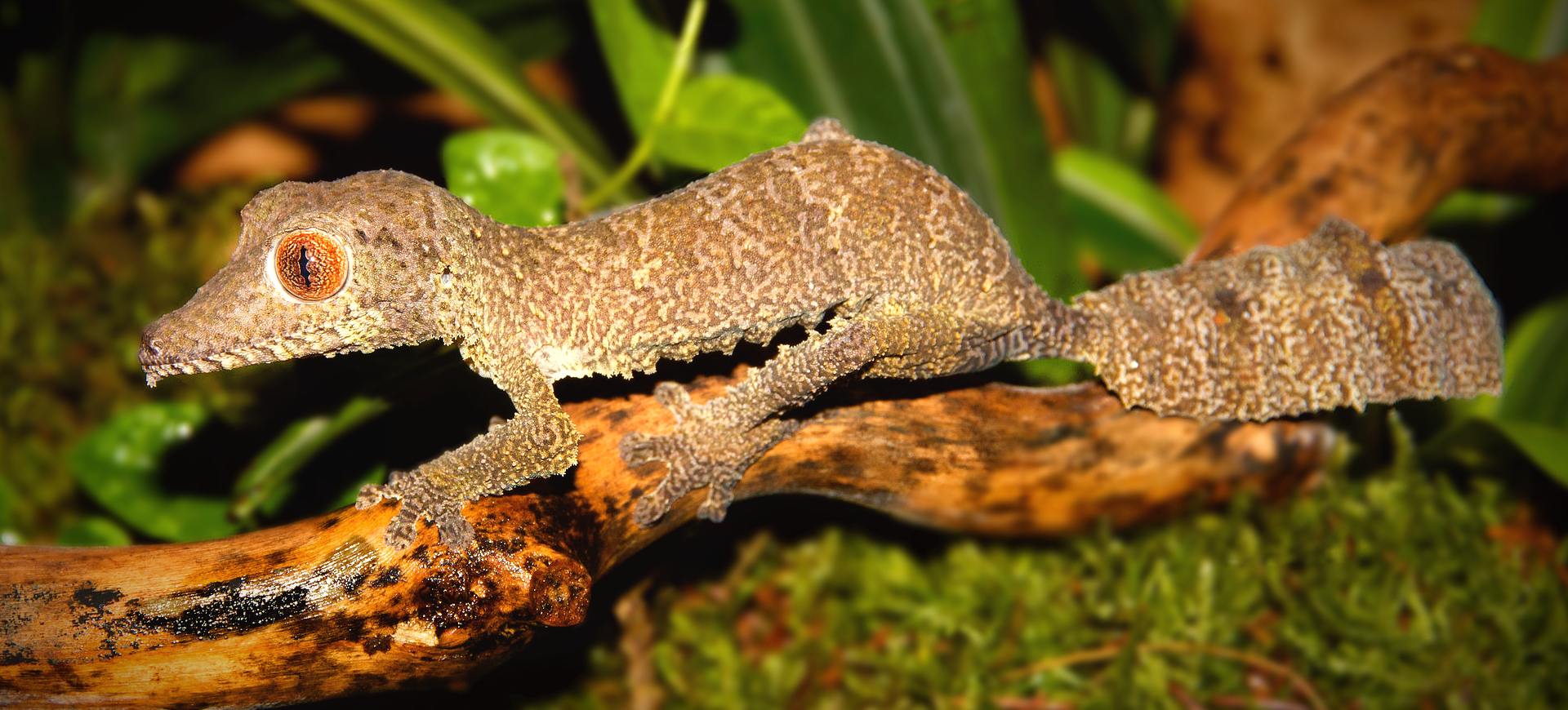Overview
The Madagascar Day Gecko, known scientifically as Phelsuma madagascariensis, is a brightly colored lizard native to the tropical forests of Madagascar. These geckos are diurnal, making them one of the few gecko species active during the day. They exhibit vibrant green bodies accented with red or blue markings, depending on the subspecies, which not only make them a favorite among reptile enthusiasts but also serve as camouflage among the foliage. The Madagascar Day Gecko has adhesive toe pads that allow it to easily climb smooth surfaces and inhabit various environments, from natural forests to human dwellings.
This species plays a vital role in their ecosystem, acting as predator and prey. As insectivores, they help control insect populations, feeding on various arthropods and occasionally nectar and fruit, aiding pollination. The geckos are preyed upon by birds and larger reptiles, contributing to the tropical food web. Their bright coloration, daytime activity, and interactions with their environment make them a subject of interest for ecologists and conservationists, particularly as their habitats face deforestation and human expansion pressures.
Madagascar Day Geckos have adapted well to human-altered landscapes, often found in gardens and buildings where they can find ample food and basking spots. However, their adaptability also makes them vulnerable to pet trade exploitation, with many individuals being captured for sale globally. Conservation efforts are focused on habitat preservation and regulating the pet trade to ensure these unique geckos remain a vibrant part of Madagascar’s biodiversity.
Taxonomy
Kingdom
Phylum
Class
Order
Family
Genus
Species
Sub Species
Type
RANGE
Current distribution:
The Madagascar Day Gecko is widely distributed across Madagascar, inhabiting both the eastern rainforests and the northern and western dry forests. Their presence in urban and rural human dwellings highlights their adaptability to various environments. Despite this wide distribution, habitat loss and degradation remain concerns, making the conservation of their natural habitats a priority for ensuring their continued survival in the wild.
Their adaptability has also introduced populations outside of Madagascar, including the Comoros, Seychelles, and parts of Florida, where escaped or released pets have adapted to similar climatic conditions. Monitoring these populations is important for understanding the impact of non-native species on local ecosystems and biodiversity.
Physical Description:
The Madagascar Day Gecko is notable for its striking green coloration, ranging from bright lime to a deeper emerald, depending on the individual and subspecies. Adults can reach lengths of up to 8 inches (about 20 cm), making them one of the larger species within the Phelsuma genus. Their bodies are slender and agile, with large, round eyes that provide excellent daytime vision for spotting prey. The red or blue markings that adorn their dorsal side and face add to their aesthetic appeal and aid in camouflage and individual recognition.
Their specialized toe pads are a marvel of evolution. They are composed of thousands of tiny scales called setae that allow for incredible adherence to surfaces, facilitating their arboreal lifestyle. This adaptation enables them to easily navigate vertically on glass, walls, and even upside down on ceilings. The tail of the Madagascar Day Gecko is also prehensile to some extent, assisting in balance and grip as they move through their environment. This combination of physical traits makes them highly adapted to natural and human-influenced environments.

Lifespan: Wild: ~8 Years || Captivity: ~15 Years

Weight: Male & Female: 1.5-2.5 ounces (40-70 grams)

Length: 10-25 cm

Top Speed: 30 mph (48 km/h)
Characteristic:
Native Habitat:
The Madagascar Day Gecko is endemic to Madagascar and thrives in the island’s tropical and subtropical forests. Its natural habitat includes rainforests, dry deciduous forests, and even human-modified environments where it finds suitable living conditions. These areas’ humid climate and dense vegetation provide ideal conditions for the geckos, offering ample food sources and shelter from predators.
Their adaptation to various environmental conditions underscores the gecko’s resilience and ecological versatility. However, the ongoing deforestation and habitat fragmentation in Madagascar pose significant threats to their populations, emphasizing the need for habitat conservation efforts. Protecting these natural habitats is crucial for preserving the biodiversity of Madagascar, including the unique species like the Madagascar Day Gecko.
Climate Zones:
Biomes:
WWF Biomes:
Biogeographical Realms:
Continents:
Countries:
Diet:
Diet & Feeding Habits:
The Madagascar Day Gecko is primarily insectivorous, preying on a wide variety of insects and other small invertebrates. Their diet includes ants, flies, moths, and occasionally smaller lizards, showcasing their role as pest controllers in their habitats. The ability to consume nectar and fruit makes them unique among reptiles, contributing to the pollination of several plant species within their range.
Their diet must be carefully managed in captivity to mimic natural nutritional intake, including supplements to prevent calcium and vitamin D3 deficiencies. Feeding strategies involve offering a variety of live insects, fruit purees, and specially formulated gecko diets to ensure a balanced diet. The foraging behavior of Madagascar Day Geckos in the wild, moving through the foliage in search of food, highlights their active and exploratory nature.
Mating Behavior:
Mating Description:
Madagascar Day Geckos exhibit a unique mating behavior. Males often engage in territorial displays to attract females and deter rivals. These displays can include vocalizations, body inflation, and color intensification. Males are polygynous, mating with multiple females during the breeding season.
Females lay small clutches of eggs, typically two at a time, adhering to hidden surfaces or within crevices in trees or buildings. The eggs are incubated for approximately two months before hatching. Hatchlings are independent of birth, receiving no parental care, and must fend for themselves, finding food and avoiding predators. This reproductive strategy allows for rapid population growth in optimal conditions, contributing to the species’ resilience and adaptability.
Reproduction Season:
Birth Type:
Pregnancy Duration:
Female Name:
Male Name:
Baby Name:
Social Structure Description:
Madagascar Day Geckos lead predominantly solitary lives, each claiming and vigilantly guarding its territory from potential rivals. This territorial behavior is crucial, as it ensures access to sufficient resources such as food and basking spots, which are vital for their survival and reproductive success. During mating periods, the dynamic within these territories shifts, allowing for interactions between males and females. Males engage in elaborate displays to attract females, which include vibrant color displays, body posturing, and a series of vocalizations, showcasing the complexity of their social interactions within the context of reproduction.
Territorial disputes among males can escalate into intense confrontations, often characterized by physical skirmishes and loud vocalizations, as each strives to maintain or expand their dominion. Such disputes are a testament to the high stakes in securing a territory, directly impacting an individual’s mating opportunities and access to essential resources. The significance of territoriality in the life cycle of the Madagascar Day Gecko is thus underscored, as it plays a pivotal role in determining reproductive success and survival.
Groups:
Conservation Status:
Population Trend:
While precise numbers are difficult to ascertain, the Madagascar Day Gecko is relatively stable within protected areas of Madagascar. However, populations in regions undergoing rapid deforestation and habitat fragmentation are at risk. Conservation measures focusing on habitat preservation and the regulation of the pet trade are essential for maintaining healthy populations in the wild.
The adaptability of Madagascar Day Geckos to human-altered environments has helped buffer some populations against the immediate impacts of habitat loss. Nevertheless, continued vigilance and conservation efforts are necessary to ensure these unique reptiles remain a vibrant part of Madagascar’s ecological tapestry.
Population Threats:
Habitat loss presents a critical challenge to the survival of Madagascar Day Geckos. Vast swathes of their natural environments are being cleared for agricultural purposes, logging activities, and the expansion of urban areas. This deforestation strips these geckos of their homes. It disrupts the delicate balance of their ecosystems, making it increasingly difficult for them to find food, mates, and suitable nesting sites.
In addition to habitat destruction, the illegal pet trade significantly endangers Madagascar Day Geckos. Enthusiasts around the world covet these animals for their striking appearance and daytime activity, leading to a high demand that fuels their capture and exportation in often inhumane conditions, resulting in high mortality rates. Moreover, climate change poses an existential threat to these geckos, as rising temperatures and shifting weather patterns have the potential to alter their habitats in unpredictable ways.
Conservation Efforts:
Conservation initiatives for the Madagascar Day Gecko are increasingly focusing on preserving Madagascar’s unique tropical forests, which are critical for the survival of this vibrant species. Habitat protection efforts are being complemented by restoration projects that aim to rehabilitate areas degraded by deforestation for agriculture, logging, and urban development. These conservation actions are essential not only for maintaining the natural habitats of the Madagascar Day Gecko but also for ensuring the overall biodiversity of the island, which includes numerous other species that are endemic and equally vulnerable.
In parallel, there is a concerted effort to regulate the pet trade, which has historically contributed to the decline of wild populations of the Madagascar Day Gecko. International cooperation and the implementation of legal frameworks, such as those provided by CITES (the Convention on International Trade in Endangered Species of Wild Fauna and Flora), are critical in monitoring and controlling the trade of these geckos. Additionally, education and outreach programs are being developed to engage local communities in Madagascar and inform potential pet owners globally about the ecological importance of these geckos. By raising awareness of the threats the Madagascar Day Gecko faces and promoting responsible pet ownership, conservationists hope to reduce the demand that fuels the illegal pet trade and protect these geckos in their natural habitat.
Additional Resources:
Fun Facts
- Madagascar Day Geckos are one of the few gecko species with the ability to vocalize, producing sounds that play a role in social interactions and territorial disputes.
- Their bright green coloration provides camouflage among the leaves and makes them one of the most visually striking reptiles in their habitat.
- The adhesive pads on their toes contain millions of tiny hairs, allowing them to climb smooth surfaces and walk upside down on ceilings.
- Madagascar Day Geckos can regenerate their tails if lost, a common defense mechanism against predators.
- They have a unique way of licking their large, round eyes to keep them clean, as they do not have eyelids.
- These geckos are among the few reptiles that, in addition to their insectivorous diet, prefer nectar and fruit.
- In some areas, Madagascar Day Geckos are welcomed by humans for their role in controlling insect pests.
- The lifespan of Madagascar Day Geckos can double in captivity, highlighting the impact of environmental stresses on their survival in the wild.
- Their skin sheds in large pieces rather than flaking off, and they often eat the shed skin to reclaim some of the nutrients.
- Madagascar Day Geckos have been observed using human-made structures as habitats, showcasing their adaptability to various environments.







